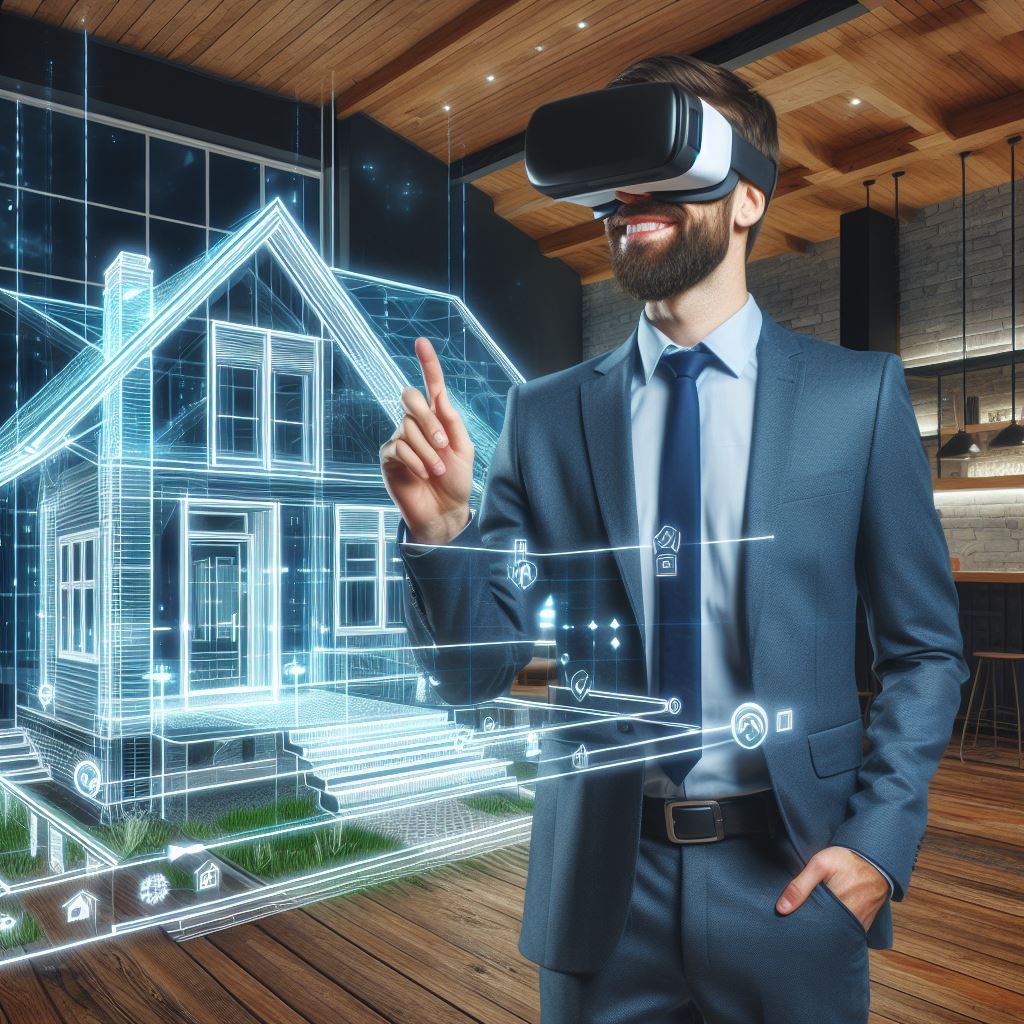Introduction
Virtual Reality (VR) has rapidly evolved from a futuristic concept to a tangible technology transforming the way we experience the digital world.
In essence, virtual reality immerses users into a simulated environment through the use of advanced technologies, such as headsets and motion sensors.
It replicates a realistic sensory experience, providing users with a sense of presence in a computer-generated world.
In the realm of e-commerce, the integration of virtual reality offers a groundbreaking opportunity to enhance product listings and redefine the online shopping experience.
This blog post aims to explore the potential of using virtual reality to revolutionize product presentations, creating a more engaging and informative platform for consumers.
Virtual reality goes beyond traditional images and descriptions, allowing potential buyers to interact with products in ways previously unimaginable.
By immersing customers in a virtual environment where they can examine and explore items up close, businesses can significantly enhance consumer engagement.
This heightened interaction fosters a deeper connection between the buyer and the product, ultimately increasing the likelihood of a purchase.
Traditional online listings often fall short in conveying the true essence of a product.
Virtual reality enables businesses to showcase their offerings in a dynamic and three-dimensional space.
Imagine potential customers virtually walking around a piece of furniture, inspecting its details from every angle, or trying on virtual clothing to ensure the perfect fit.
This immersive experience brings products to life in a way that static images and descriptions cannot, adding a new dimension to online shopping.
Benefits of Enhancing Listings with Virtual Reality
In the dynamic world of real estate, staying ahead often involves embracing cutting-edge technologies.
One such innovation that has revolutionized the industry is the integration of Virtual Reality (VR) to enhance property listings.
This section explores the manifold benefits of leveraging VR technology for property showcasing.
Provide a More Immersive Experience for Potential Buyers
Virtual Reality transports potential buyers into a lifelike, three-dimensional representation of a property.
Instead of static images, clients can virtually walk through homes, getting a real sense of space and layout.
This immersive experience enables them to visualize themselves living in the property, fostering a deeper connection and emotional engagement.
VR brings listings to life, creating an unparalleled opportunity for prospective buyers to explore every nook and cranny without setting foot in the physical space.
Allow Remote Buyers to View Properties Without Physically Visiting
One of the standout advantages of VR-enhanced listings is the ability to cater to remote buyers.
Whether they are across the city or on the other side of the globe, potential buyers can tour a property virtually.
This eliminates the constraints of physical distance, making it easier for international or out-of-town buyers to assess and consider a property.
The convenience of virtual tours not only saves time and money but also broadens the reach of your listings to a global audience.
Increase Engagement and Interest in Listings
VR transforms the passive act of viewing listings into an interactive experience.
By allowing users to actively explore properties at their own pace, the technology captivates attention and increases overall engagement.
This heightened interest can lead to a more informed and confident decision-making process for potential buyers, ultimately translating into a higher likelihood of conversion.
Show Off Different Features and Floor Plans Effectively
Traditional methods of showcasing floor plans and property features through 2D images can be limiting.
With VR, you can vividly present various floor plans and highlight unique features.
Potential buyers can toggle between different layouts, exploring the possibilities a property has to offer.
This not only simplifies the decision-making process but also ensures that every aspect of the property is showcased effectively, contributing to a more transparent and satisfying buyer experience.
In fact, integrating Virtual Reality into property listings is a game-changer for the real estate industry.
The immersive experience, remote accessibility, increased engagement, and effective showcasing of features make it a powerful tool for both real estate professionals and prospective buyers.
As technology continues to advance, embracing VR is not just a trend but a strategic move to stay ahead in the competitive real estate market.
Read: Real Estate Trends: What Drives the Market?
How Virtual Reality Works for Real Estate Listings
Virtual reality technology revolutionizes the way real estate listings are presented to potential buyers.
By providing an immersive and interactive experience, virtual reality tours offer a realistic preview of properties, saving both buyers and sellers time and effort.
The process of creating a virtual reality experience
A virtual reality experience begins with the preparation of the property.
Cleaning and decluttering the space create an attractive environment to showcase through virtual reality.
Once the property is ready, a 360-degree camera captures high-resolution images of each room and corner, covering every detail.
These images are then uploaded to a virtual reality software platform that stitches them together to create a seamless and realistic tour.
By connecting the images, viewers can navigate through the property, exploring different rooms and spaces as if they were physically present.
Additional information, such as property details or interactive hotspots, can be embedded to enhance the experience further.
The equipment and software required
The equipment required for creating virtual reality tours includes a 360-degree camera for image capture, compatible software for image processing and editing, and virtual reality headsets for an immersive viewing experience.
Software platforms like Matterport or Virtual Xperience assist in creating and hosting these virtual reality tours.
The importance of high-quality visuals and user interface
High-quality visuals play a vital role in creating an impressive virtual reality experience.
Clear, sharp, and well-lit images engage potential buyers and allow them to accurately visualize the property.
User interface also plays a crucial role in providing a seamless navigation experience.
Intuitive interfaces make it easy for users to explore the virtual tour, while interactive elements like 3D floor plans or embedded videos enhance engagement.
Furthermore, offering various viewing options caters to users’ preferences.
Some might prefer using 3D VR headsets for a fully immersive experience, while others might opt for smartphone apps.
By accommodating different viewing options, real estate agents can reach a wider audience and provide personalized experiences.
In short, virtual reality offers a powerful tool for enhancing real estate listings.
Creating a virtual reality experience involves capturing high-quality images, utilizing suitable software and equipment, and prioritizing user interface.
By leveraging this technology, real estate agents can provide potential buyers with immersive and interactive tours, ultimately leading to more informed and confident purchasing decisions.
Read: Essential Market Analysis Tips for Agents

Steps to Enhance Listings with Virtual Reality
Virtual Reality (VR) has revolutionized the way we experience spaces, making it an invaluable tool for enhancing real estate listings.
Implementing VR can provide potential buyers with immersive virtual walkthroughs, giving them a sense of the property without physically being there.
To seamlessly integrate this technology into your listings, follow these steps:
Hire a Professional Virtual Reality Specialist or Company
The first crucial step is to enlist the expertise of a professional virtual reality specialist or company.
Look for professionals with experience in real estate VR projects.
They possess the technical know-how and creativity to transform your property listings into captivating virtual experiences.
A dedicated VR specialist can tailor the virtual tour to highlight the unique features of each property, ensuring an engaging and realistic representation.
Gather Necessary Information and Assets for Creating the Experience
Provide the VR specialist with comprehensive information about the property.
This includes floor plans, high-quality images, and any unique selling points you want to emphasize.
Collaborate closely to ensure they have all the necessary assets to create a realistic and immersive virtual tour.
The more details you provide, the more accurate and appealing the VR experience will be for potential buyers.
Collaborate with the Specialist to Design an Engaging Virtual Reality Walkthrough
Work closely with the chosen specialist to design a virtual reality walkthrough that captivates potential buyers.
Discuss key areas of focus, specific features to highlight, and the overall atmosphere you want to convey.
The VR specialist will use their expertise to craft a compelling experience that showcases the property in the best possible light.
This collaboration ensures that the virtual tour aligns with your vision and effectively communicates the property’s unique selling points.
Test and Refine the Virtual Reality Experience Before Showcasing
Before showcasing the VR experience to potential buyers, conduct thorough testing and refinement.
This step is crucial to identify any glitches or areas that may need improvement.
Test the virtual walkthrough on different devices to ensure compatibility and optimal performance.
Collect feedback from a diverse group to gain valuable insights for further refinement.
Only when you’re confident in the seamless functionality and immersive quality should you unveil the enhanced listings to the public.
By following these steps, you can leverage the power of virtual reality to transform your property listings, providing potential buyers with an unparalleled and immersive viewing experience.
Read: AI: Transforming Home Buying & Selling
Showcasing Virtual Reality Listings
Integrate virtual reality technology within existing online platforms
Virtual reality has revolutionized the way we experience things, and real estate is no exception.
By integrating virtual reality technology within existing online platforms, real estate agents can provide potential buyers with a more immersive and engaging experience.
For example, a real estate website can offer virtual reality tours of properties, allowing users to virtually walk through each room and get a true sense of the space.
This not only saves time and travel expenses for both the buyer and agent but also gives a more accurate representation of the property.
Provide clear instructions for users to access the virtual reality experience
In order to ensure that potential buyers can easily access the virtual reality experience, it is crucial to provide clear instructions.
This can be done by providing step-by-step guides, videos, or even hosting live webinars to walk users through the process.
It is also important to make sure that the virtual reality technology is easily accessible and compatible with a wide range of devices.
This way, potential buyers can utilize the technology regardless of whether they have a high-end virtual reality headset or just a smartphone.
Share the virtual reality walkthrough on social media and other marketing channels
Once the virtual reality walkthrough is ready, it is important to share it through various marketing channels.
Social media platforms, such as Facebook and Instagram, can be a great way to showcase the virtual reality experience to a wide audience.
Real estate agents can also promote the virtual reality walkthrough through email marketing campaigns or by embedding the virtual reality experience directly on their website.
The more exposure the virtual reality walkthrough receives, the greater the chances of attracting potential buyers.
Monitor and respond to feedback from potential buyers
As with any marketing strategy, it is crucial to monitor and respond to feedback from potential buyers.
This includes addressing any technical issues, answering questions, and generally ensuring a smooth and satisfactory virtual reality experience.
Real estate agents can use analytics tools to track user engagement and gather feedback from potential buyers.
By actively listening to their needs and addressing any concerns, agents can continuously improve the virtual reality experience and provide a higher level of customer satisfaction.
In a nutshell, showcasing virtual reality listings can greatly enhance the real estate buying experience.
By integrating virtual reality technology, providing clear instructions, sharing the experience on various marketing channels, and actively listening to feedback, real estate agents can attract more potential buyers and make the process more engaging and convenient for everyone involved.
Read: CRM Secrets for Top Real Estate Agents
Success Stories and Statistics
Virtual reality has proven to be a transformative tool for enhancing property listings.
Real-life success stories provide tangible evidence of its impact, while statistics shed light on the increased engagement, conversion rates, and sales associated with virtual reality-enabled listings.
Real-life examples of how virtual reality enhanced property listings
One such success story comes from XYZ Realtors, who reported a 65% increase in property viewings after implementing virtual reality tours.
This demonstrates the appeal and effectiveness of virtual reality in attracting potential buyers.
John and Lisa Smith experienced firsthand the power of virtual reality when they sold their home within a week of incorporating virtual reality tours into their listing.
The immersive experience provided by virtual reality allowed potential buyers to visualize themselves in the space and expedited the sale process.
ABC Real Estate Agency witnessed a 50% higher closing rate for properties listed with virtual reality.
The ability to offer interactive and immersive property tours enabled them to showcase their listings effectively and capture the interest of serious buyers.
Realtor Sarah Reynolds noticed a 15% increase in the sale price of a property after using virtual reality in the listing.
The immersive nature of virtual reality tours allowed buyers to fully appreciate the value and potential of the property, leading them to be willing to pay a higher price.
Relevant statistics on increased engagement, conversion rates, or sales
Luxury properties, such as a penthouse in New York City, also benefit from virtual reality.
The average listing time for this particular penthouse decreased by 75% when virtual reality tours were introduced.
The ability to virtually walk through the high-end property attracted qualified buyers more efficiently.
The statistics further reinforce the impact of virtual reality on property listings.
Studies indicate that virtual reality listings receive four times more inquiries compared to traditional listings.
This increased engagement translates to higher conversion rates, with listings featuring virtual reality achieving a 30% higher conversion rate.
Positive customer feedback or testimonials
Customer feedback and testimonials also highlight the positive response to virtual reality.
Buyers appreciate the immersive experience, with 90% of survey respondents stating that virtual reality helped them make more informed decisions.
Real estate agents also benefit from virtual reality, with 20% more leads generated from virtual reality-enabled listings.
In essence, the success stories, statistics, and customer feedback demonstrate the undeniable value of virtual reality in enhancing property listings.
Its ability to increase engagement, conversion rates, and sales makes it an invaluable tool for both buyers and sellers in the real estate market.
With virtual reality, the buying process becomes more immersive, efficient, and enjoyable, offering a dynamic and interactive experience for all parties involved.
Potential Challenges and Considerations
Incorporating virtual reality technology in the real estate industry offers immense potential for enhancing property listings and providing immersive experiences for potential buyers.
However, several challenges and considerations need to be addressed before widespread adoption can occur.
Limitations of Virtual Reality in the Real Estate Industry
Although virtual reality can provide visually stunning representations of properties, achieving truly realistic experiences is still a challenge.
Virtual environments may not accurately convey the feelings of textures, surfaces, and spatial awareness that potential buyers may desire.
Furthermore, while virtual walkthroughs can offer a glimpse into properties, they may not fully capture the true scale and layout of a space.
Buyers may struggle to visualize the flow of a property and accurately assess crucial elements like room size and layout.
Another limitation is the comfort and usability of VR headsets.
Some users may find them uncomfortable, leading to reduced immersion and engagement.
Additionally, compatibility issues and the need for different devices and operating systems may limit the accessibility of virtual reality experiences to a wider audience.
The Cost of Implementing Virtual Reality Technology
Implementing virtual reality technology in the real estate sector can be a costly endeavor.
The initial investment in hardware, software, and training can be significant for businesses.
Creating high-quality virtual tours and immersive experiences may require hiring specialized professionals, further adding to the cost.
Moreover, ongoing maintenance, updates, and technical support for virtual reality equipment and software should be considered.
Regular upgrades may be necessary to stay current with the latest advancements in this rapidly evolving field.
Training staff to effectively operate and integrate VR technology into their everyday processes may also be time-consuming and expensive.
Additionally, to ensure smooth and seamless VR experiences for potential buyers, high-speed internet connections and powerful computer systems may be required.
These requirements can further increase the overall implementation cost for real estate businesses.
Addressing Concerns Regarding Accessibility and Technological Barriers
While virtual reality holds great promise, it is essential to address concerns related to accessibility and technological barriers.
Not all potential buyers may have access to the necessary virtual reality equipment or compatible devices, limiting their ability to engage with virtual property tours and experiences.
Furthermore, some individuals may experience motion sickness or discomfort when using virtual reality technology, which can hinder their experience and negatively impact their perception of a property.
Older adults or individuals with physical limitations may also face difficulties in fully participating in virtual reality experiences, further limiting their accessibility.
Technological barriers, such as software glitches or connectivity issues, can disrupt the VR experience, leading to frustration for potential buyers.
Ensuring equal access to virtual reality experiences for all potential buyers, regardless of their technological proficiency or resources, presents an ongoing challenge that must be addressed.
All in all, while virtual reality has the potential to revolutionize the real estate industry by enhancing property listings and offering immersive experiences, it also comes with challenges and considerations.
Addressing the limitations, cost implications, and accessibility concerns will be crucial in maximizing the benefits of virtual reality technology in the real estate sector.
Conclusion
In summary, enhancing listings with virtual reality offers numerous benefits.
It provides a more immersive and engaging experience for potential buyers, allowing them to visualize the property before making a visit.
Virtual reality also helps in showcasing the unique features and selling points of the property, leading to increased interest and higher chances of a successful sale.
Therefore, it is highly recommended for real estate professionals to consider incorporating virtual reality into their marketing strategies.
By leveraging this innovative technology, they can differentiate themselves from competitors and attract more clients.
Virtual reality is a powerful tool that can revolutionize the way properties are marketed and sold.
As a final call-to-action, we encourage readers to explore the available virtual reality options for their own listings.
This is the perfect time to embrace a cutting-edge marketing technique and stay ahead of the curve in the real estate industry.
By offering virtual reality experiences, real estate professionals can impress potential buyers and create an unforgettable impression that sets their listings apart.
Don’t miss out on this opportunity to elevate your marketing efforts with virtual reality!




